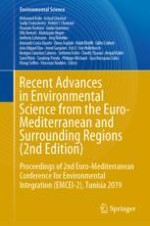
2021 | OriginalPaper | Buchkapitel
Efficiency of Hybrid Process of Coagulation/Flocculation Followed by Membrane Filtration for the Treatment of Synthetic Vegetable Oil Refinery Wastewater
verfasst von : Ghofrane Louhichi, Philippe Moulin, Ahmed Ghrabi, Imen Khouni
Erschienen in: Recent Advances in Environmental Science from the Euro-Mediterranean and Surrounding Regions (2nd Edition)
Aktivieren Sie unsere intelligente Suche, um passende Fachinhalte oder Patente zu finden.
Wählen Sie Textabschnitte aus um mit Künstlicher Intelligenz passenden Patente zu finden. powered by
Markieren Sie Textabschnitte, um KI-gestützt weitere passende Inhalte zu finden. powered by